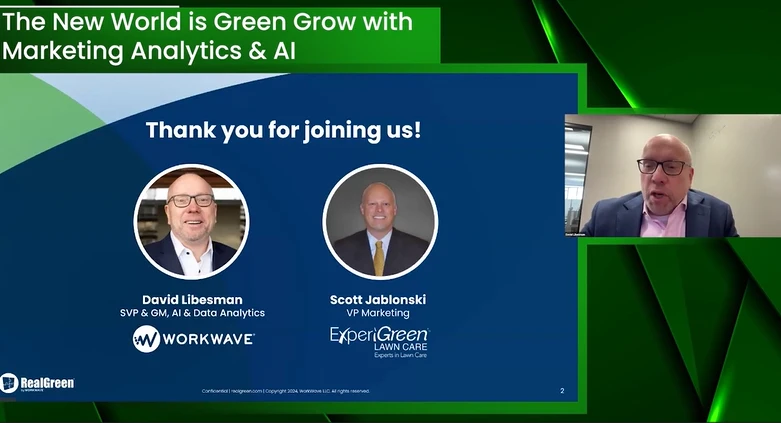In my 20 years of consulting I have only worked with a few companies that had sales funnels, yet this simple measurement tool is as important as your profit & loss statement. This system is easy to set up and is extremely valuable in the sales process. Companies that have them will have better quality leads, waste less time on unqualified prospects, and turn more proposals into contracts.
Regardless of the markets you serve, commercial, residential, industrial, or if you do design build or maintenance, you will benefit from this simple measurement process.
So, What is a sales funnel?
For our purposes in the landscaping business a sales funnel is a system for measuring from the initial contact of a potential customer until the final sale. The items that need to be tracked and measured are -
- The inquiry
- The lead
- The proposal
- The contract
The inquiry
The inquiry is a call that comes in that doesn’t become a lead. Tracking inquiries helps determine how effective your direct marketing materials or your Internet marketing is. For example, if you are trying to reach high-end clients, yet getting calls from people who can’t afford your high quality work, there may be a problem in your marketing materials, whether hard copy or electronic. When ads are placed in magazines, newspapers, or direct mail, inquiries usually spike and this also helps determine what type of customer you are reaching . . . or not reaching.
It’s important that when calls come into your office these inquiries are screened properly; if not, unqualified prospects may become leads. Unqualified leads just waste everyone’s time. This process can be accomplished with good screening questions and proper training. Large companies have, or should have, specialists to handle these calls; the reason for this is obvious.
The amount of inquiries should be counted and tracked each day.
The lead
A lead is a potential customer that fits the type of “targeted customer” you have identified and are looking for. When these folks call, “lead sheets” should be filled out with all of the necessary information, including those screening questions we talked about above.
If at all possible it’s best to book an appointment on that initial call and not say, Joe, John, or Sally will get back to you. By adding this step it avoids the proverbial telephone tag even if you are using email to set your appointments. Once the appointment is booked with your “lead”, they will most likely stop making phone calls to other contractors.
Ideally, information for the lead sheet should be taken over the phone electronically and, if it is determined that the call is “qualified”, an appointment should be booked on the salesperson’s calendar electronically along with the lead sheet information. Leads should be numbered and kept track of on a daily basis and entered into your sales tracking system. If using paper lead sheets, the same process should take place, but it’s best to have the appointment entered directly onto the salesperson’s calendar.
The proposal
Once the sales person/designer has the appointment with the prospect two things will happen. The call turns into a proposal or it doesn’t. If it doesn’t, a brief explanation of why should be turned in to the office where it’s being tracked. By taking this step the office person knows the lead was taken care of in a timely way and what the result of this call was and why. Without doing this step sometimes leads are neglected by having too much time pass between the call to the office and an actual appointment. This is sometimes called “a leaky funnel”.
If the call is successful and a proposal is needed, this should be sent to your office sales system as well. Proposals can either be done during the first sales appointment or delivered to the potential customer at an agreed upon time.
If your proposal doesn’t require a design, think about the idea of having a portable printer in your vehicle along with a computer. There is no time like the present, while at the property, to prepare proposals. The customer will be delighted when the door bell rings 20-30 minutes later with a formal proposal prepared in a branded company presentation folder. My clients have reported this idea not only saved an enormous amount of time but helped them close 50 percent more jobs. Why? This is because they try and close the job on the initial call, but enough on sales ideas let’s get back to the funnel.
Once the proposal is created, it also should be numbered and tracked in your sales system. If you try to “close” and get the job, great; but, if not successful then, an agreed upon time should be made when you will “check back”. In other words, you are getting permission from the potential customer, in advance, to check in with him or her to “ask for the job”. Many sales are lost because sales people don’t call back and ask for the job.
The contract
If the proposal is accepted and a contract signed, in some organizations the sales process is over. In others, especially with larger jobs, the salesperson may need to usher the job through until completion and invoicing.
The pipeline
As these functions are occurring in your sales process and recorded in your sales funnel, the most important thing that results is your “pipeline”. Your pipeline contains the potential leads and pending proposals in your funnel. For example, if your company needs $1 million in new sales in the next 12 months and your close rate is 20% on the proposals you offer, then your goal needs to be five times your needed sales. So your job as the owner/salesperson is to figure out how you are going to give proposals totaling $5M in your “target market”. Now, you can see how important your sales funnel becomes.
Most company funnel reports are in an Excel spreadsheet. The project name is placed in the first column along the top followed by contact phone number, contact name, type of job, date submitted, amount of bid, the probability of getting the job as a percentage, and comments. The information in this report should be ongoing and used in the company’s weekly sales meetings.
There you have it, the basic information for a sales funnel. Now all you need to do is set up the process described above and have the discipline to religiously follow it. The companies that use this simple process have much greater control of their sales, usually have much better results and, in the end, make more money!
Ed Laflamme, LIC, grew the largest landscape company in Connecticut and sold it in 1999. Ed then co-founded The Harvest Group with Bill Arman. He’s a professional speaker, author, business advisor, and coach serving landscape owners nationwide. Visit www.harvestlandscapeconsulting.com to learn more about Ed and his company. Ed can be reached via ed@harvestlandscapeconsulting.com.
Get curated news on YOUR industry.
Enter your email to receive our newsletters.Latest from Lawn & Landscape
- Ever-changing landscape of SEO
- Fleetio acquires Auto Integrate, raises $450M in Series D funding
- Davey Tree expands in St. Paul, promotes Ostlie to district manager
- Schill Grounds Management taps 3 for senior leadership roles
- HD Hyundai Construction Equipment North America adds to wheeled excavator lineup
- High maintenance
- From Design to Proposal: Estimating and Rendering Support Services
- PERC adds Joel Stutheit as senior manager of business development






